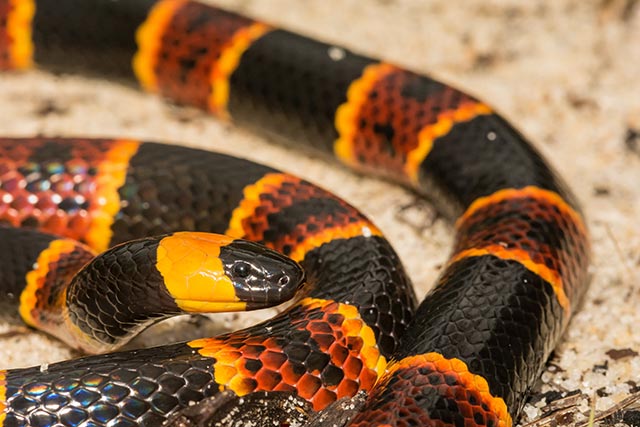Business Insider confirms Dr. Bryan Ardis’ allegation that Ozempic weight loss drug comes from Gila monster reptile venom
04/02/2024 / By Ethan Huff

It has come to light that the controversial weight loss and diabetes drug Ozempic (semaglutide) contains the venom of Gila monster reptiles.
Gila monster venom contains a natural compound that regulates hunger. It is similar in composition to a hormone produced in the intestines of the human body, but the lizard version is said to be much longer lasting.
The Southwestern lizard is the only such lizard in North America that produces venom. And that venom is now being used in not just Ozempic but also a host of other “blockbuster” anti-obesity drugs containing GLP-1, short for glucagon-like peptide-1.
Confirming what Dr. Bryan Ardis also found, Business Insider reported on the Gila monster venom found in Ozempic, explaining that when consumed by humans, it mimics key hormones that make a person feel “full,” thus decreasing appetite.
“Rising demand for these types of drugs, which mimic key hormones that tell us to feel full, have led to severe shortages of GLP-1s in recent months,” Business Insider warns.
“But before semaglutide became the darling shot of Hollywood, scientists discovered that compounds in the venom of Gila monsters could help drug developers make better diabetes medications than they’d ever had before.”
(Related: Did you know that during the “pandemic,” Wuhan coronavirus [COVID-19] patients were testing positive for venom peptides in their blood plasma and fecal samples?)
Lizard venom produces hours of anti-hunger
It was Dr. John Eng who first discovered back in the 1990s that Gila monsters produce a special hormone in their venom that mimics the hunger-regulating hormone naturally produced in human intestines.
“In people, it’s called glucagon-like peptide-1,” reports explain. “In Gila monsters, Eng named it exendin-4.”
While GLP-1 lasts for mere minutes, Exendin-4 takes hours to degrade, making it a much more effective hunger regulator. The idea is that people who take Ozempic and other GLP-1 drugs will only have to do so every so often as opposed to dozens of times per day.
After repeatedly trying but failing to sell the establishment on GLP-1, Eng patented the natural molecule in 1995 – this is problematic in and of itself, by the way, because nature should never be patented.
In the end, though, Eng recreated GLP-1 as a synthetic hormone called exteatide that was approved by the U.S. Food and Drug Administration (FDA) in 2005 to treat type 2 diabetes.
The way it works for diabetes is when a person’s blood sugar levels are high, GLP-1 drugs send signals to the pancreas to secrete more insulin. They also send signals to the person’s brain telling his or her body to feel fuller with less food.
GLP-1 also slows down digestion, changing the way a person’s body turns food into energy.
The earliest iterations of extenatide had to be taken twice a day, but newer extended-release versions of the synthetic hormone last longer and thus do not need to be taken as often.
“Today, most GLP-1s are injected once a day, or just once a week,” reports indicate. “But they arguably wouldn’t be here if it wasn’t for Eng’s work – which created the very first GLP-1 drug.”
Novo Nordisk, the company that makes Ozempic and another similar drug called Wegovy, Gila monsters have nothing to do with the company’s discovery of exendin-4, which was supposedly “based on GLP-1 biology in humans.”
At the same time, Novo Nordisk admits that exendin-4 has a “GLP-1-like effect,” and the fact that it is found in Gila monsters is “an important contribution to the field” as it led to the development of the first-ever injectable drug of its kind.
More related news about the hidden toxins in pharmaceutical drugs can be found at BadMedicine.news.
Sources for this article include:
Submit a correction >>
Tagged Under:
diabetes, drugs, extenatide, fightobesity, Gila monsters, GLP-1, Glucagon-like peptide-1, lizard, obesity, Ozempic, slender, toxins, venom, Wegovy, weight loss
This article may contain statements that reflect the opinion of the author
RECENT NEWS & ARTICLES
COPYRIGHT © 2022 Covenom19.com
All content posted on this site is protected under Free Speech. Covenom19.com is not responsible for content written by contributing authors. The information on this site is provided for educational and entertainment purposes only. It is not intended as a substitute for professional advice of any kind. Covenom19.com assumes no responsibility for the use or misuse of this material. All trademarks, registered trademarks and service marks mentioned on this site are the property of their respective owners.



















